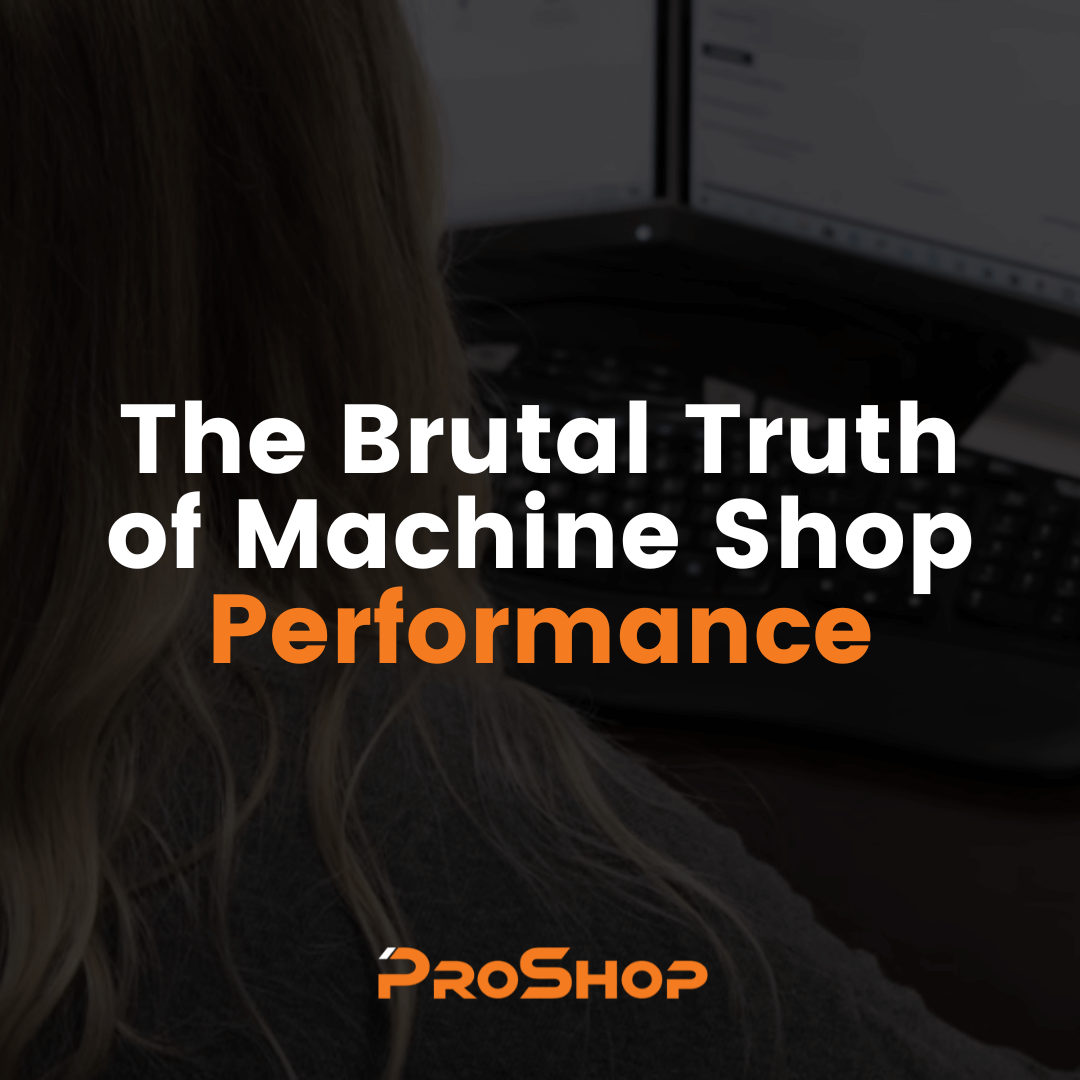Process
& Scheduling
Management
Maintenance
Management
& Inspection
& Material Planning
Financial Data
Management
Written By: Paul Van Metre
Without winning a job in the first place, you have no opportunity to make a profit on it. So getting a new RFQ quoted quickly and getting a price and lead time back to your customer is essential. But it’s also really important to know that the price you quote is both a “correct” market price and will also provide you with enough margin to make a profit.
The key to getting that “correct” price is an accurate estimate of cost, with the appropriate margin added on top. But many shop owners don’t do this essential step. Rather they “wing it”, shoot high, and just get that RFQ quoted, especially in busy seasons. It’s not uncommon at all for a shop owner to tell us this is the way they quote a new RFQ:
Admittedly, it’s fast to come up with a price and lead time like that, but it’s highly risky and makes it more likely that the job will be a loser, late, or both. It’s so easy to overlook a very expensive detail that’ll guarantee a loss.
Manufacturers work too hard to lose money on jobs, and the reality is that preparing detailed quotes doesn’t have to be a burden. So why would you choose to play it fast and loose like that and risk losing money on the job?
Avoid the Pitfalls
It sucks to lose money on jobs. This underscores the importance of having a robust digital process embedded in something like a manufacturing ERP system. (Please excuse the shameless plug for ProShop). Knowing which pitfalls to avoid also goes a long way. Here’s a few things to keep in mind:
A system that guides you.
ProShop’s estimating process guides you through three easy steps to ensure that you don’t miss the little details that can derail your profitability.
What are we quoting, and who are we quoting it for? Let’s jot down the part number, part name, revision, client, etc. Usually, most of this info can be found in the title block of the part drawing. This makes the estimate record easily identifiable in the future and ensures that we are indeed quoting the correct revision. That Part Number based estimating/quoting history will be permanently tied to any Work Orders, along with the actual job costing. This makes it very fast and easy to get a complete picture of any part.
How will that component or assembly be made? Write out the ACTUAL routing steps required to successfully complete the job. This would include planning steps, programming, raw stock prep, machine operations, outside processing, final inspection, shipping, and invoicing just to name a few.
ProShop makes this easy by allowing you to create custom estimating templates for YOUR typical manufacturing processes. In this case, just plug in your set-up and cycle times, and you’re off to the races! You can update the specifics of a part, in literally seconds or minutes.
Based on the quantity (or quantities) that you are quoting, what are your out-of-pocket costs? This might include items such as:
What kind of markup percentage do you want to place on those costs? Depending on the quantity being quoted, what percentage scrap rate do you want to account for in the event that you produce some bad parts? Those defaults can again be included in your templates so you don’t forget them.
After you’ve determined your part, process, and costs, you need to determine the margin that will maximize your profit, while still winning the job. Consider what the different price breaks might be so you’re competitive across the quantity range. ProShop allows you to adjust pricing on individual quantities whether you’re quoting 1, 5, 10, or volumes of 1,000 to 10,000. That granular control allows you to sharpen your pencil where needed maximize the profit/volume equation.
How we’ve simplified things:
Being detailed and thorough shouldn’t equate to taking a long time. ProShop’s estimating tools allow you to create detailed estimates in minutes by leveraging a rapid estimating template system. You can customize and select pricing options for nearly anything you can think of:
This allows you to create better quality quotes in less time, resulting in higher overall job profitability. When RFQs are being quickly responded to, it can have a tremendous impact on your win rates. Don’t just take our word for it:
– Jim Carr – President, CARR MACHINE & TOOL
– Kevin Richards – Co-Owner, JJR Engineering & Fabrication
Set The Team Up for Success:
When you quote from the hip and just throw out a price, one of the major downsides is that you need to reverse engineer your process if you do win the job. Trying to figure out your time budget for each operation, what you can pay for tooling, material, outside processes, etc. It can lead to a ton of work and is very error prone. It’ll likely be a messy, home-cooked meal every time.
ProShop’s novel approach to incorporating the estimating process as the foundation of the production workflow, leverages your quoting process for efficiency down the line. In pulling estimating information forward to order entry and the digital work order, ProShop eliminates the need to enter manufacturing data more than once. It’ll set you up for success with planning, scheduling, outside processes, and much more. Further to that, the ability to build out complex BOMs for assemblies to manage both commercial and manufactured sub-component costs is a game changer. Once awarded, those same BOMs can be used to allocate inventoried goods and drive procurement for purchased items.
So if getting more thorough, accurate estimates done in ½ to ⅓ of the time would help your shop win more, get in touch today to learn more about how ProShop ERP can be used to revolutionize your quoting process, and so much more!


